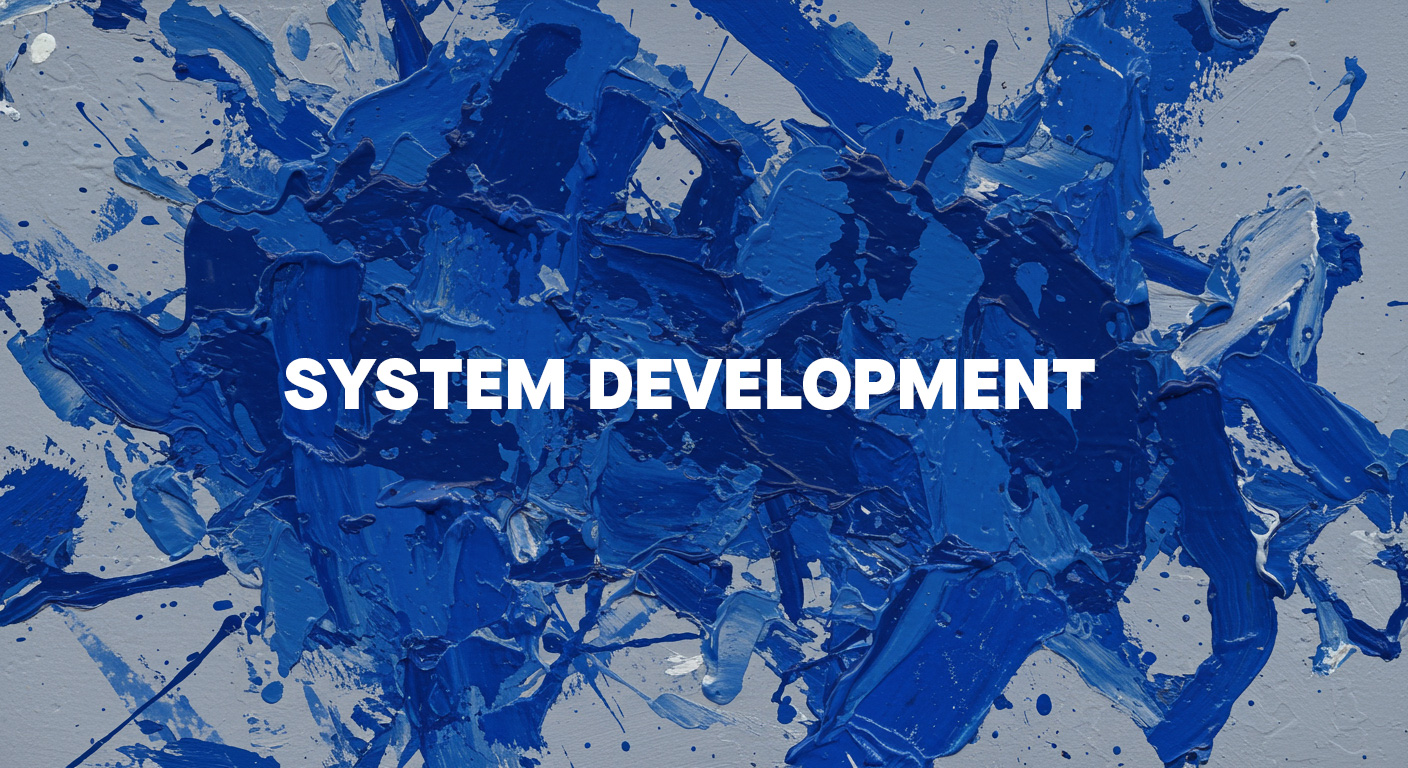API連携とは?ビジネスを加速するシステム間連携の基礎知識

公開レポートでは、APIを「事業の中核」と位置づける企業が8〜9割に達し、年間のAPIトラフィックが前年比で二桁成長を続けるという傾向が繰り返し示されています。 例えばPostmanのState of the APIや主要クラウド各社の利用動向を見ると、API投資は増加傾向が継続し、データ共有や自動化の面で収益寄与が拡大しています。プロダクト現場でも、SaaS・基幹・データ基盤を横断するAPI連携を整備した組織では、機能提供のスピードと品質の両立がしやすく、学習サイクルの短縮につながるという報告が多く見られます。¹²³⁴
ただし、API連携は単なるHTTPのやり取りではありません。認証・認可(誰が何をできるかの確認)、スキーマ互換性(データ形式の後方互換)、冪等性(同じリクエストを繰り返しても結果が変わらない性質)、スロットリング(呼び出し上限の制御)、可観測性(挙動の可視化)、そして組織ガバナンスまで含めた総合設計が必要です。同期か非同期かの選択、契約(Contract)の明確化、失敗前提のリカバリー設計が鍵になります。本稿では、CTO・エンジニアリングマネージャーが意思決定できる粒度で、アーキテクチャ選択から実装、運用、ビジネス価値の測定までを、コードと指標を交えて立体的に整理します。
API連携の正体とアーキテクチャ選択
API連携とは、アプリケーション同士が定義済みのインターフェイスを通じて機能やデータをやり取りする仕組みです。代表的な形態としては、リクエスト・レスポンス型のRESTやgRPC(軽量・高性能なRPC)、そしてイベント通知やストリームを使う非同期連携があります。重要なのは、ビジネス要件の応答性(どれだけ速く応答が必要か)と一貫性要件(結果がどれだけ厳密に一致すべきか)に応じて通信モデルを選ぶという視点です。決済のオーソリのように厳格な同期整合が必要な領域では同期APIが適し、受注後の在庫同期や分析基盤へのデータ連係など耐遅延性が高い領域では非同期イベントで疎結合にする方が運用の自由度が高まります。
接続トポロジーは、ポイントツーポイントで素早く始める選択と、ゲートウェイやiPaaS(Integration Platform as a Service)に集約して全体の管理性を高める選択の間で揺れます。判断の軸は、トラフィックや提供者・利用者の数、変更頻度、セキュリティ境界の強度といった定量項目です。利用者が急増し、スロットリングやキー管理、監査要件が厳しくなるほど、APIゲートウェイやBFF(Backend for Frontend)の導入、スキーマレジストリ(イベントやAPIのスキーマ定義を集中管理)の採用が長期の総保有コストを下げます。逆に、期間限定の実験や限定的な社内連携であれば、軽量なリバースプロキシと契約テストだけで十分な場合もあります。
同期か非同期かが全体設計を決める
同期APIはユーザー体験の即時性に直結する一方、下流システムの遅延や障害がそのまま伝搬するため、タイムアウトとフォールバック(代替応答・保留処理)戦略が不可欠です。非同期はピーク吸収や疎結合が利点ですが、最終的な整合性と再処理、重複排除の仕組みが求められます。設計の起点は、どのユースケースでレイテンシがビジネス価値を大きく左右するかを言語化し、他は非同期へ逃がすという割り切りです。決してどちらか一方に寄せ切るのではなく、エンドツーエンドの体験に合わせてハイブリッドに設計するのが現実解です。
連携スタイルの比較と選び方
ESB/EAI(企業内統合の集中型バス/アダプタ)のような集中管理は一貫性と監査で強みを発揮しますが、過度な集中は変更待ちのボトルネックになります。マイクロサービス的な自己完結の原則を採り、公開APIはプロダクトとして管理し、内部はイベント駆動で緩やかに同期する構えが、スケーリング時に破綻しにくい構図です。意思決定では、1件あたりの許容遅延、p95レイテンシ(遅延の95パーセンタイル)、許容損失率、マルチテナント対応の有無、運用主体の境界といった指標を口頭評価まで落とし、関係者間で前提と優先度を合わせることが肝要です。
設計原則とガバナンスで失敗を未然に
連携のスピードと安全性は、契約の明確さと互換性戦略で決まります。変更は避けられない前提で、後方互換の維持、廃止予告、ドキュメントとサンプルの同時更新、そして契約テストの自動化を習慣化します。ペイロード設計では、冪等性キー(重複呼び出しを一意化する鍵)やページング、エラーコード規約、タイムスタンプのタイムゾーン方針などを、OpenAPIやJSON Schemaに落としてレビュー可能にします。⁵⁶⁷
openapi: 3.0.3
info:
title: Orders API
version: 1.0.0
paths:
/orders:
post:
summary: Create order
parameters:
- in: header
name: Idempotency-Key
required: true
schema:
type: string
requestBody:
required: true
content:
application/json:
schema:
$ref: '#/components/schemas/OrderCreate'
responses:
'201':
description: Created
headers:
Idempotency-Key:
schema: { type: string }
'409': { description: Conflict }
/orders:
get:
summary: List orders
parameters:
- in: query
name: cursor
schema: { type: string }
- in: query
name: limit
schema: { type: integer, default: 50, maximum: 200 }
components:
schemas:
OrderCreate:
type: object
required: [customerId, items]
properties:
customerId: { type: string }
items:
type: array
items:
type: object
required: [sku, qty]
properties:
sku: { type: string }
qty: { type: integer, minimum: 1 }
セキュリティは認証・認可・輸送路の三層で考えます。外部提供にはOAuth 2.0のクライアントクレデンシャルやJWTベースの委譲(署名付きトークン)を用い、内部ではmTLS(相互TLS)で相互認証し、鍵と証明書のローテーションを自動化します。ペイロード暗号化が必要な場合はフィールドレベルの暗号化で二重化し、監査上の不可否認性(改ざんされていないことの証明)を確保します。次の例はmTLSで外部APIに接続し、タイムアウトと再試行を実装したGoクライアントです。⁸⁹
package main
import (
"context"
"crypto/tls"
"crypto/x509"
"fmt"
"io"
"log"
"net/http"
"os"
"time"
)
func newClient() (*http.Client, error) {
cert, err := tls.LoadX509KeyPair("client.crt", "client.key")
if err != nil { return nil, err }
caCert, err := os.ReadFile("ca.crt")
if err != nil { return nil, err }
caPool := x509.NewCertPool()
caPool.AppendCertsFromPEM(caCert)
tr := &http.Transport{TLSClientConfig: &tls.Config{Certificates: []tls.Certificate{cert}, RootCAs: caPool, MinVersion: tls.VersionTLS12}}
return &http.Client{Transport: tr, Timeout: 5 * time.Second}, nil
}
func main() {
client, err := newClient()
if err != nil { log.Fatal(err) }
ctx, cancel := context.WithTimeout(context.Background(), 3*time.Second)
defer cancel()
req, _ := http.NewRequestWithContext(ctx, http.MethodGet, "https://api.partner.example/v1/resource", nil)
var resp *http.Response
for attempt := 1; attempt <= 3; attempt++ {
resp, err = client.Do(req)
if err == nil && resp.StatusCode < 500 { break }
time.Sleep(time.Duration(attempt) * 200 * time.Millisecond)
}
if err != nil { log.Fatal(err) }
defer resp.Body.Close()
body, _ := io.ReadAll(resp.Body)
fmt.Println("status=", resp.StatusCode, "body=", string(body))
}
信頼性と観測性を担保する実装
現実の連携では、遠隔の依存先が遅くなる、障害が起きる、同一リクエストが重複する、といった事象が常態です。ここで効くのが**冪等性、指数バックオフ(再試行の待機を段階的に延ばす)、サーキットブレーカー(失敗が続いたら一時遮断)、アウトボックス(イベントの確実配送)**といった定石です。以下のNode.jsの例は、Idempotency-Keyを使って重複処理を防ぎ、レート制限と入力検証、例外ハンドリングを備えたエンドポイントです。
import express from 'express'
import rateLimit from 'express-rate-limit'
import Redis from 'ioredis'
import { body, validationResult } from 'express-validator'
const app = express()
const redis = new Redis(process.env.REDIS_URL)
app.use(express.json())
const limiter = rateLimit({ windowMs: 60_000, max: 300 })
app.use('/orders', limiter)
app.post('/orders',
body('customerId').isString().notEmpty(),
body('items').isArray({ min: 1 }),
async (req, res) => {
try {
const errors = validationResult(req)
if (!errors.isEmpty()) return res.status(400).json({ errors: errors.array() })
const key = req.header('Idempotency-Key')
if (!key) return res.status(400).json({ error: 'Idempotency-Key required' })
const lock = await redis.setnx(`idem:${key}`, '1')
if (!lock) {
const cached = await redis.get(`idem:resp:${key}`)
if (cached) return res.set('Idempotency-Key', key).status(200).json(JSON.parse(cached))
return res.status(409).json({ error: 'Duplicate in-progress' })
}
await redis.expire(`idem:${key}`, 60)
// simulate downstream call with timeout
const orderId = `ord_${Date.now()}`
const response = { orderId, status: 'accepted' }
await redis.setex(`idem:resp:${key}`, 3600, JSON.stringify(response))
return res.set('Idempotency-Key', key).status(201).json(response)
} catch (e) {
console.error(e)
return res.status(500).json({ error: 'internal_error' })
}
})
app.use((err, _req, res, _next) => {
console.error('unhandled', err)
res.status(500).json({ error: 'unhandled' })
})
app.listen(3000, () => console.log('listening on 3000'))
外部SaaSへの連携は、クォータや一時的なスロットリングに耐える必要があります。PythonのFastAPIとHTTPクライアントで、指数バックオフとジッター(再試行間隔にランダム性を加える)を織り交ぜた再試行とタイムアウト、構造化ログを実装すると運用が安定します。
from fastapi import FastAPI, HTTPException
import httpx, asyncio, random, logging
app = FastAPI()
logger = logging.getLogger("crm")
async def call_crm(payload: dict) -> dict:
timeout = httpx.Timeout(5.0, connect=2.0)
async with httpx.AsyncClient(timeout=timeout) as client:
for attempt in range(1, 5):
try:
r = await client.post("https://crm.example.com/api/v2/leads", json=payload)
if r.status_code in (429, 503):
delay = min(2 ** attempt, 8) + random.random()
await asyncio.sleep(delay)
continue
r.raise_for_status()
return r.json()
except httpx.HTTPError as e:
if attempt == 4:
logger.exception("crm_error", extra={"attempt": attempt})
raise
await asyncio.sleep(0.2 * attempt)
@app.post("/sync-lead")
async def sync_lead(lead: dict):
try:
res = await call_crm(lead)
return {"status": "ok", "crmId": res.get("id")}
except Exception:
raise HTTPException(status_code=502, detail="upstream_error")
長時間の遅延や障害が続く場合、呼び出しを断ち切るサーキットブレーカーが有効です。Spring BootとResilience4jを用いたWebClientの例では、しきい値を超えると短絡させ、フォールバックでキュー投入やキャッシュ応答に切り替えます。
import io.github.resilience4j.circuitbreaker.annotation.CircuitBreaker;
import org.springframework.http.MediaType;
import org.springframework.stereotype.Service;
import org.springframework.web.reactive.function.client.WebClient;
import reactor.core.publisher.Mono;
@Service
public class PartnerService {
private final WebClient client = WebClient.builder().baseUrl("https://partner.example").build();
@CircuitBreaker(name = "partner", fallbackMethod = "fallback")
public Mono<String> createOrder(String body) {
return client.post().uri("/v1/orders")
.contentType(MediaType.APPLICATION_JSON)
.bodyValue(body)
.retrieve()
.bodyToMono(String.class);
}
private Mono<String> fallback(String body, Throwable t) {
// enqueue to outbox or return cached response
return Mono.just("{\"status\":\"accepted_deferred\"}");
}
}
最終的な整合性を担保するには、アプリのトランザクションとメッセージ公開を分離しないことが重要です。いわゆるトランザクショナル・アウトボックスは、DBにイベントを永続化し、別プロセスで確実に配信します。以下は簡易なアウトボックスパターンの擬似コードです。
// within the same DB transaction as business change
INSERT INTO orders (...);
INSERT INTO outbox(event_type, payload, status) VALUES('ORDER_CREATED', '{...}', 'PENDING');
// separate worker
SELECT * FROM outbox WHERE status='PENDING' LIMIT 100 FOR UPDATE SKIP LOCKED;
// publish to Kafka, then
UPDATE outbox SET status='SENT', sent_at=now() WHERE id=?;
ビジネス価値の測定とスケール戦略
API連携の価値は、開発生産性と運用コスト、そしてビジネスKPIの三点で評価できます。リードタイム、変更失敗率、MTTR(平均復旧時間)といったDORA指標に、商流のコンバージョン率や平均処理時間、人的作業の削減時間を紐づけると、投資対効果が見通しやすくなります。例えば、受注処理をAPIで自動化し、手入力や突合作業をなくせば、1オーダーあたりの数分の削減が積み上がり、月間で大きな時間短縮につながることがあります。金額換算では、削減工数に人件費レートを掛け、エラー減少による機会損失の抑制、顧客応答時間短縮による受注率の改善を加味します。実装コストは、初期開発、人員教育、ゲートウェイや監視のツール費用、外部APIのクォータ費用を資本化・経費化の方針に沿って整理し、回収期間をシナリオ別に試算します。¹⁰
性能面では、アプリとネットワークの両面で律速が決まります。接続の再利用、JSONの軽量化、データベースのN+1解消、そして非同期化が効きます。以下はGoで軽量な読み取り専用APIを実装し、p95レイテンシを観測した例です。環境は4vCPUのコンテナ、メモリ1GB、ローカルネットワーク上の依存性なしという単純系です。
package main
import (
"encoding/json"
"log"
"net/http"
"time"
)
type Item struct{ ID string `json:"id"` Name string `json:"name"` }
func handler(w http.ResponseWriter, r *http.Request) {
start := time.Now()
it := Item{ID: "123", Name: "sample"}
w.Header().Set("Content-Type", "application/json")
_ = json.NewEncoder(w).Encode(it)
dur := time.Since(start)
log.Printf("path=%s dur_ms=%.2f", r.URL.Path, float64(dur.Milliseconds()))
}
func main(){
mux := http.NewServeMux()
mux.HandleFunc("/items/123", handler)
srv := &http.Server{Addr: ":8080", Handler: mux, ReadTimeout: 2*time.Second, WriteTimeout: 2*time.Second}
log.Fatal(srv.ListenAndServe())
}
# 測定例(参考値)
$ wrk -t4 -c200 -d30s http://localhost:8080/items/123
Requests/sec: 38000.12
Latency p50: 3.1ms p95: 8.4ms p99: 15.6ms
Transfer/sec: 130.5MB
上記はCPUやNIC、GCの状況に強く依存するため、実運用では依存先の呼び出しを含むエンドツーエンドで測るべきです。OpenTelemetry(ベンダー中立の計測標準)でトレースを仕込み、p50・p95・p99の遅延、外部呼び出し数、エラー率、タイムアウト率をダッシュボード化して、毎週の変更が体験に与える影響を見張ると、API連携は開発と運用の会話が通じる共通言語になります。
設計と運用をつなぐ実務の工夫
契約駆動のレビュー会を定期化し、OpenAPIのPRにテストとサンプルを必ず添付します。外部に公開するエンドポイントは、バージョン付けと非推奨期間を明記し、破壊的変更はBFF層で吸収します。障害演習として、外部依存を意図的に遅延・エラーにし、フォールバックやキューの滞留を目視で確認すると、実装の弱点が見えてきます。さらに、連携の責務境界を図にして、運用当番やインシデント時の一次切り分けを明文化すると、深夜のページャーも落ち着いて迎えられるようになります。
まとめ:API連携を「仕組み」としてプロダクト化する
API連携は、単発のつなぎ込みではなく、設計原則、再現性のある実装、観測と改善のループを持つ「仕組み」に昇華した瞬間から、組織の速度と品質を底上げします。同期と非同期を意識的に切り分け、冪等性と再試行を当たり前にし、契約とドキュメントを資産として育てることが、長期の開発体験を大きく変えます。まずは、最もビジネス価値の高いユースケースを一つ選び、今日紹介した契約テンプレートと実装スニペットを土台に、スロットリング、サーキットブレーカー、アウトボックスの三点を最初のスプリントで入れてみてください。次の四半期、ダッシュボードのp95レイテンシとMTTRがどう動くかを問いかけ、数字で会話を始めましょう。小さな成功が積み上がる頃、API連携は単なる配線ではなく、あなたの事業の競争優位そのものになっているはずです。
参考文献
- Postman. State of the API 2024. https://www.postman.com/state-of-api/2024/
- The Hacker News. APIs Drive Majority of Internet Traffic. https://thehackernews.com/2024/03/apis-drive-majority-of-internet-traffic.html
- STT Info. New survey reveals API strategies, concerns as enterprises look to securely free data for business growth. https://www.sttinfo.fi/tiedote/69958932/new-survey-reveals-api-strategies-concerns-as-enterprises-look-to-securely-free-data-for-business-growth?publisherId=58763726
- Business Wire. New Survey Reveals API Strategies and Concerns as Enterprises Look to Securely Free Data for Business Growth. https://www.businesswire.com/news/home/20221129006117/en/
- SBB API Principles – Consider to Support Idempotency. https://schweizerischebundesbahnen.github.io/api-principles/restful/best-practices/#:~:text=Consider%20to%20Support%20%60Idempotency
- SBB API Principles – Prefer Cursor Pagination. https://schweizerischebundesbahnen.github.io/api-principles/restful/best-practices/#:~:text=Prefer%20Cursor,Pagination
- SBB API Principles – Use OpenAPI deprecated property for deprecation. https://schweizerischebundesbahnen.github.io/api-principles/restful/best-practices/#:~:text=Every%20element%20on%20the%20API,using%20the%20OpenAPI%20property%20%E2%80%9Cdeprecated%E2%80%9D
- Google Developers. Using OAuth 2.0 for Server to Server Applications (Service Accounts). https://developers.google.com/identity/protocols/oauth2/service-account
- Okta Developer. TLS Client Authentication for Services. https://developer.okta.com/blog/2015/12/02/tls-client-authentication-for-services
- Google Cloud Blog. Using the Four Keys to measure your DevOps performance. https://cloud.google.com/blog/products/devops-sre/using-the-four-keys-to-measure-your-devops-performance